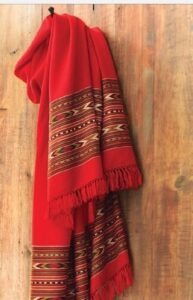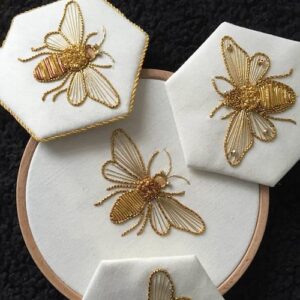Everything you need to know about the Ageless Art of
Walnut Wood Carving.
Walnut wood carving is practised in the Jammu and Kashmir state, India.
Walnut wood carving is ensured under GI of the Agreement on Trade-Related Aspects of Intellectual Property Rights (TRIPS) contract.
It is recorded at item 182 as “Kashmir Walnut Wood Carving” of the GI Act 1999 of the Government of India with registration approved by the Controller General of Patents Designs and Trademarks.
How is the raw material made available?
The raw material is collected from a Walnut tree.
It is known as ‘Doon Kul’ and is cut when it is of the age of 300 years.
The Walnut wood is hard, strong and shiny, its close grain and even surface inspiring fine and precise work.
It additionally presents attractive impressions with minor plain cleaned surfaces.
What are the motifs endured by these items?
Motifs on the item include rose, lotus, iris, grapes, pears as well as Chinar leaves.
Dragon themes and designs are taken from Kani and weaved covers all discover their place in wooden articles with great finish surfaces.
How is it done?
Undercut (Khokerdar)
This contains multi-layers that can surpass up to seven.
The general impact tends towards a three-dimensional delineation of different themes or scenes for eg. a forest with layers of greenery, interweaved, rabbits jumping from hedges, flying birds.
Latticework (Jalidahr)
It works in screens and utilizes transparent Jali work.
Chinar leaf motifs and Mogul jali designs are equal.
Deep carving (Vaboraveth)
This work is called raised work and the patterns in this type of cutting involve mythical serpents or lotus themes.
The profundity of the cut part can go up to 5 inches.
Semi carving (Padri)
This includes flimsy boards along the edge of the surface with a focal theme.
Shallow carving (Sadikaam)
The themes are simply pursued along the lines in pencil, to give them a little profundity.
The process
From being secured from local wood depots to being cut with an exquisite capability, the tale of every walnut wood carved piece of workmanship is similar.
The entire procedure is detailed.
Manufacturing
Walnut wood to be utilized for cutting are cut into planks of required thickness with the machines; the sawmill is known as “Band saws” and the procedure is known as “Laker Chiren” or essentially “Chirin”.
Seasoning
Planks are then sliced and stacked to dry normally permitting air to go through.
The main stage in this procedure is to keep the boards in an erect standing position so the sap in the board plummets.
The procedure lasts for 4 to 6 months.
Carpentering
The prepared wood is then sent to the woodworker who makes the necessary article from it which might be a case, window or a household item like a table, seat and so on.
These boards are cut in the necessary size and afterwards are planed with the assistance of planar, and this procedure is designated “Randh Dunn” to make them consistently thickened boards of normal size.
Finishing
The last plank is currently given the final details utilizing different nearby devices.
The sandpaper is accustomed to smoothing the harsh edges, while the pullet and stain are utilized to make the surface smooth and cleaned.
Carving
From the craftsman who is by and large alluded to as ‘Chaan’ the item is then passed onto the woodcarver, our legend of this story privately known as Naqash who with his aptitudes transforms the insipid board of wood into a loved type of workmanship.
What are the instruments used?
The conventional instruments employed are:
- Etching of various types
- Planer
- Measuring tape
- Angle for getting parallel as well as perpendicular lines
- Wooden scale
How are the themes inspired?
The themes are driven from a variety of different conventional miracles of Kashmir, Chinar leaves, Vine leaves, Lotus as well as Rose.
The Kashmiri strength of wood carving is Khatam-band which has geometrical illustrations flawlessly done on the wood.
The structures are either cut along the fringes or filling the whole surface.
The unpredictably cut flower designs or mathematical themes make lovely bits of craftsmanship.
A solitary piece can take from 2 days to a half year relying upon the multifaceted nature of the example
Who introduced Walnut wood carving?
Sheikh Hamza Makhdoom in the 15th century founded the Walnut wood carving.
During this time Zainul Abdideen was in power.
He raised the workmanship to enhance the economy of the valley.
The speciality was at first confined to the origin of elucidating royal residences and homes.
To this date, a few fine instances of complicatedly cut buildings, sacred places and tombs make due in Kashmir- the holy places of Noor-ud-noise Wali at Charar-e-Sharif, the Naqshaband mosque and the sanctum of Nund Rishi are only a couple of them.
It has moved from expanding manifestations to an entire scope of contemporary items over the range.
Did we miss something?
Let us know in the comments down below!













